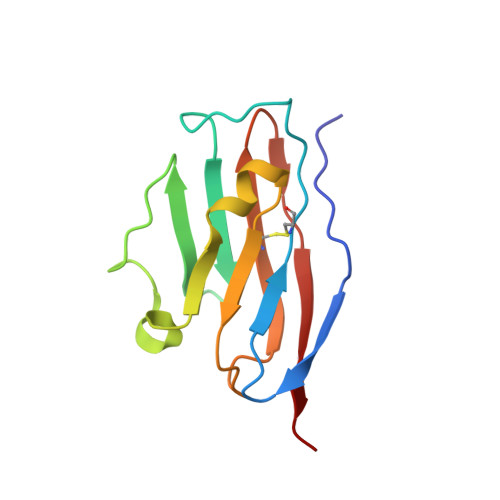Design, Synthesis, and Antitumor Activity Evaluation of 2-Arylmethoxy-4-(2,2'-dihalogen-substituted biphenyl-3-ylmethoxy) Benzylamine Derivatives as Potent PD-1/PD-L1 Inhibitors.
Zhang, H., Zhou, S., Plewka, J., Wu, C., Zhu, M., Yu, Q., Musielak, B., Wang, X., Awadasseid, A., Magiera-Mularz, K., Wu, Y., Zhang, W.(2023) J Med Chem 66: 10579-10603
- PubMed: 37496104
- DOI: https://doi.org/10.1021/acs.jmedchem.3c00731
- Primary Citation of Related Structures:
8OR1 - PubMed Abstract:
Novel 2-arylmethoxy-4-(2,2'-dihalogen-substituted biphenyl-3-ylmethoxy) benzylamine derivatives were designed, synthesized, and evaluated in vitro and in vivo against cancers as PD-1/PD-L1 inhibitors. Through the computer-aided structural optimization and the homogeneous time-resolved fluorescence (HTRF) assay, compound A56 was found to most strongly block the PD-1/PD-L1 interaction with an IC 50 value of 2.4 ± 0.8 nM and showed the most potent activity. 1 H NMR titration results indicated that A56 can tightly bind to the PD-L1 protein with K D < 1 μM. The X-ray diffraction data for the cocrystal structure of the A56/ PD-L1 complex (3.5 Å) deciphered a novel binding mode in detail, which can account for its most potent inhibitory activity. Cell-based assays further demonstrated the strong ability of A56 as an hPD-1/hPD-L1 blocker. Especially in an hPD-L1 MC38 humanized mouse model, A56 significantly inhibited tumor growth without obvious toxicity, with a TGI rate of 55.20% (50 mg/kg, i.g.). In conclusion, A56 is a promising clinical candidate worthy of further development.
- Lab of Chemical Biology and Molecular Drug Design, College of Pharmaceutical Science, Zhejiang University of Technology, Hangzhou 310014, China.
Organizational Affiliation:

















